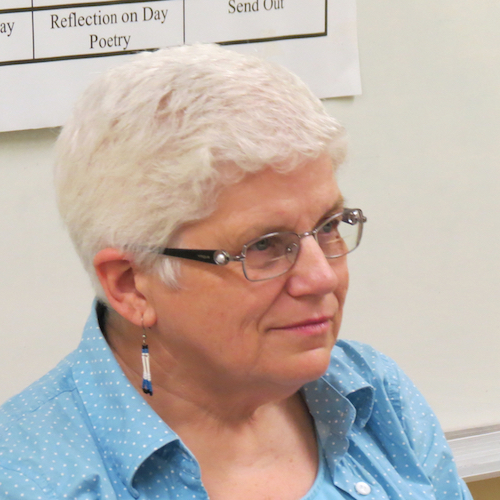The first key to accurate documentation of what the group has said is to make sure participants’ words on the important insights and decisions are written and held visible during the session, whether on cards or flipcharts or some other means. This does not mean capturing every word that is said in a long discussion, but the summary of the important points.
The second key is making sure that participants have access to the accurate documentation at the end of the session or immediately afterward.
ICA has always provided verbatim documentation immediately after sessions, so that participants knew they were heard. Thirty or forty years ago we would have someone typing on a mimeo stencil at the back of the room when the facilitation was close to finishing, and then keep people in the room with a reflective conversation on their experience until the typist could finish and literally crank out the printed copies. We learned how to convert columns of cards into tables on paper. Later we had a large portable Mac computer and a printer the size of a suitcase in the back of the room. Now, several generations of documentation later, people can take their own photos with their phones, and we can get the printed version to the clients later.
So why is there such an emphasis on immediate documentation? And why do we prefer to provide it ourselves rather than depend on the client to provide someone to document the work?
A number of years ago, a provincial government set up a huge public consultation on lotteries and gaming, a very hot topic. The facilitators made sure the participants represented the range of perspectives on the topic, which were extraordinarily polarized. With careful facilitation, every voice was heard, and their ideas were captured on the wall of each room. After long but productive work, the group came to consensus on seven recommendations. The co-facilitators in the back of each room captured and documented verbatim the cards on the wall as well as the final result, and handed each participant a copy before they left the session.
Early the next morning, the lead facilitator got a call from the minister in charge of the topic. “Hold on to the results so that we can massage them before they become public.” The lead facilitator told him that the results were already public. As a result of the transparency, there was no massaging of the group’s results, and within a year, five of the seven recommendations were implemented and the other two were under consideration.
One year just before Christmas break, staff and associates of one company had a powerful, productive planning meeting. At the end of the meeting, knowing that no one would use the room before the next meeting in January, all the cards and flipcharts were left on the wall. In the rush to get away for holidays, not everything was documented. When the team came back in January, they discovered a totally clean room – the cleaner had taken down everything, the recycling was long gone, and so were many of the insights.
Electronic photos with the quality that phones currently provide allow every participant to capture the verbatim documentation they need immediately. This allows the documenter to make the finished document after the session is over without carrying tons of cards and flipchart pages.
When you have a stake in the results of a workshop, and are tasked with documenting them after the fact, it is a strong temptation to edit the results, sometimes unconsciously, to reflect your own bias. If the external facilitator writes up the results, this temptation is more easily bypassed, although the facilitator still needs to monitor their behaviour.
Be sure to talk through with the client what kind of documentation they need. Many times verbatim documentation in chart form of what is on the wall and flipcharts after a session is sufficient. It is also fairly easy to convert the workshop cards and clusters into paragraphs. If you do that, attach the verbatim results (either photos or charts) in an appendix so that the group recognizes that its work has been taken seriously.
One client I had required documentation at the level of a university-published dissertation, and asked me to include commentary on their results. We had not talked about this in advance and it was a huge surprise. My billing was based on verbatim documentation, and I spent many unpaid hours on the work. And they did not understand that a facilitator has no opinions on their topic, and that it was inappropriate for me to do commentary. I will never again forget to ask the client exactly what kind of documentation they need!






